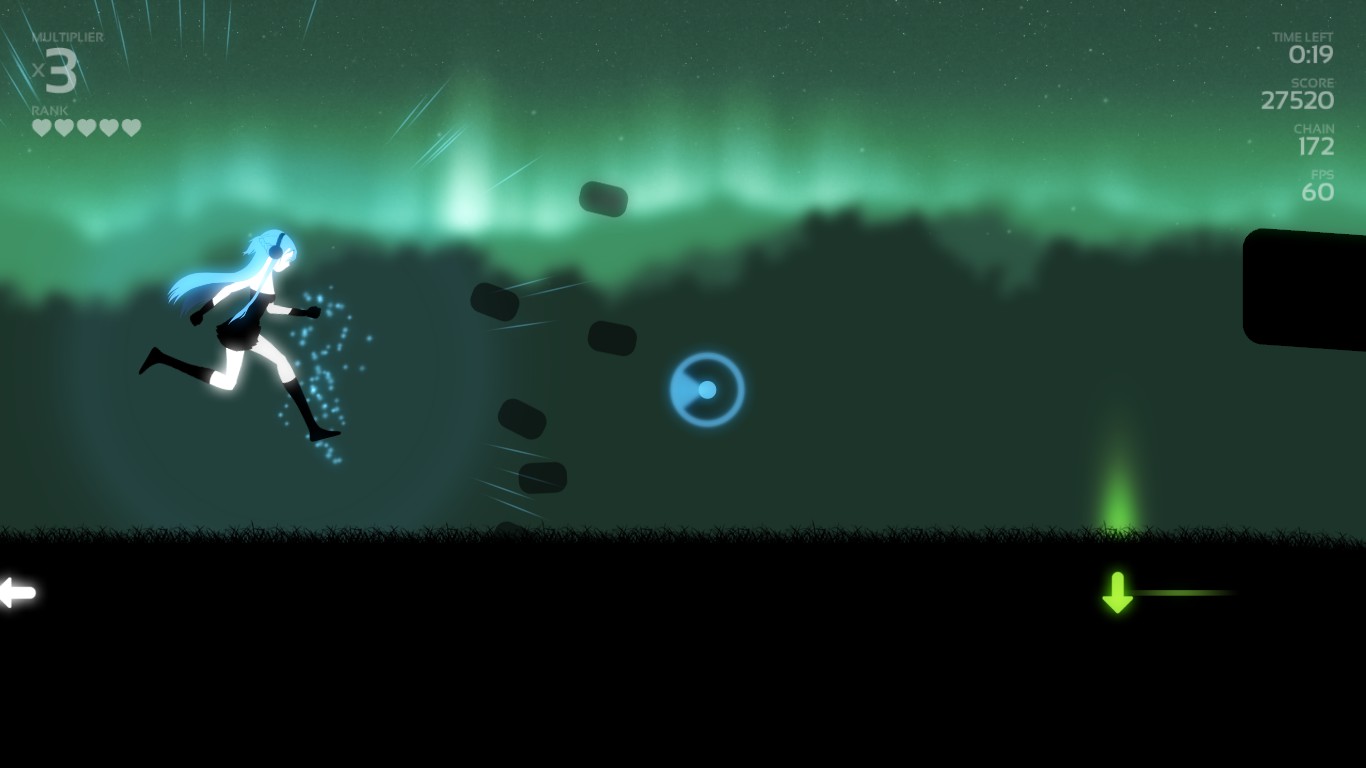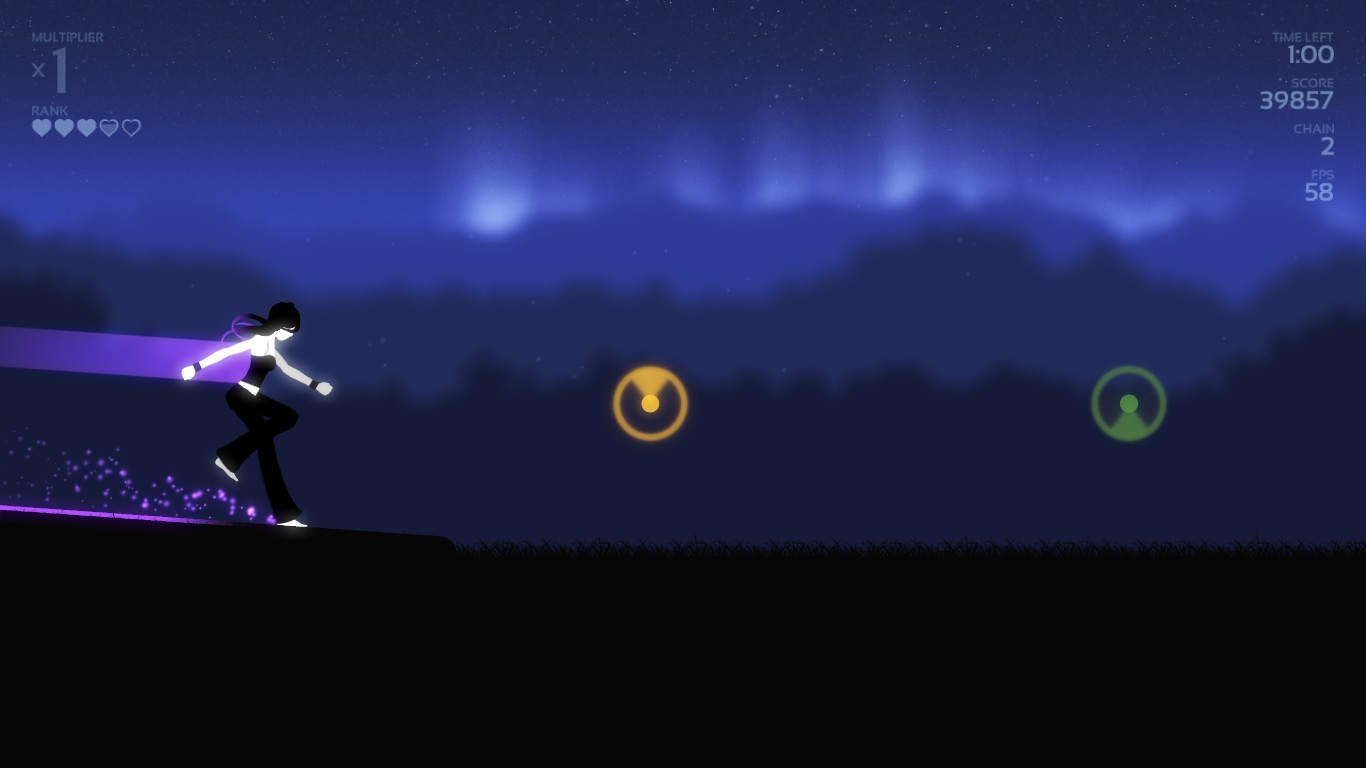Search
[{{{type}}}] {{{reason}}}
{{/data.error.root_cause}}{{{_source.title}}} {{#_source.showPrice}} {{{_source.displayPrice}}} {{/_source.showPrice}}
{{#_source.showLink}} {{/_source.showLink}} {{#_source.showDate}}{{{_source.displayDate}}}
{{/_source.showDate}}{{{_source.description}}}
{{#_source.additionalInfo}}{{#_source.additionalFields}} {{#title}} {{{label}}}: {{{title}}} {{/title}} {{/_source.additionalFields}}
{{/_source.additionalInfo}}Melody’s Escape (PC)

Melody’s Escape
Developed by: Icetesy SPRL
Published by: Icetesy SPRL
Released: May 20, 2016
Available on: Windows (reviewed), macOS, Linux/SteamOS
Genre: Rhythm
Number of Players: Single-player
ESRB Rating: N/A
Price: $9.99
(Humble Store Link)
Rhythm games have been a popular alternative for many gamers, with some notable examples being Dance Dance Revolution, Audiosurf, and osu! What lends to their attractiveness is their ability to skillfully blend music and gameplay to create an immersive and challenging experience.
Melody’s Escape first made its way to Steam Early Access in the beginning of 2014, and has since been given a full release as of May 2016. The gameplay consists of tapping or holding buttons to match visual cues in sync with the rhythm of the music. These include collecting floating orbs and navigating the various obstacles interspersed throughout the map. The concept sounds simple enough, but it’s the execution that makes the game both challenging and highly addictive.
You play as Melody, who, as the title suggests, uses music as an outlet to escape the world around her. I found myself following suit—depending on your desired difficulty and song selection, Melody’s Escape can be both relaxing and cathartic after a long day.
To play the game, simply select a difficulty and a song from your music library. The first time you play a song on a new difficulty, a timeline will be generated outlining the varying intensities of the song.
There are four base difficulty settings: relaxing, medium, intense, and overload. In the relaxing mode, you only need to worry about one button at a time, which changes along with the intensity. The medium difficulty has you regularly alternating between four inputs, whether that be the arrow keys, WASD keys, or buttons on your controller. The intense mode is where the real challenge begins, and is my personal favorite, requiring you to use both hands for a total of eight different keys. Finally, there is overload, which greatly increases the number visual cues, and requires in tune precision. Depending on your song selection, it can be near impossible to follow everything on screen.

Strong Points: Addictive and immersive gameplay; varying levels of difficulty and intensity; upbeat bundled music; pleasing visuals
Weak Points: Certain songs don’t sync with beats properly; occasional frame rate drops during the more intense parts of songs; some players may experience eye strain or motion sickness
Moral Warnings: Some mild lyrics in included songs (da*n); some of Melody’s outfits are a bit revealing
Furthermore, a custom mode exists which allows you to generate your own personalized difficulty from a variety of presets. And if you’d simply like to sit back and watch Melody navigate the course, you have the option of letting the computer play for you.
There are four intensity modes that switch throughout the song as it progresses. During the slowest portions of a song, which usually occur near the beginning and end, Melody is observed casually walking. As the pace picks up, Melody will begin jogging or even running, and new obstacles are introduced apart from the glowing orbs. Finally, during the most intense parts of a song, she begins to fly. Depending on your hardware, you may experience frame rate drops during these sections as I did. From experience, even small frame dips are noticeable and will have a negative impact on the timing of your input. Not all songs reach each of the four intensities, so be sure to check the timeline before you start to have a general idea of what to expect. Lowering the graphical setting may also help to combat frame rate drops if you experience them.
At the end of every song, you are given a numerical score and heart count (out of five) based on your efforts. The score is calculated on the length of your combos and your accuracy at matching the visual cues. Getting all the cues correct will reward you with five gold hearts and is extremely satisfying when done. A handful of Steam achievements also exist to help showcase your expert playing ability.
The game comes bundled with six songs from electronic music producer Shirobon. All the songs are upbeat and highlight the game’s core mechanics nicely.
Visually, Melody’s Escape is a pretty sight to behold. The backdrops add to the overall immersion, transitioning from a rainy city during the walking sequences to brilliant displays of color resembling the northern lights as the pace quickens. The visual cues have distinct colors that help the player match the correct corresponding key, while also changing the color of Melody’s hair.

Higher is better
(10/10 is perfect)
Game Score - 86%
Gameplay - 17/20
Graphics - 8/10
Sound - 9/10
Stability - 4/5
Controls - 5/5
Morality Score - 96%
Violence - 10/10
Language - 9/10
Sexual Content - 9/10
Occult/Supernatural - 10/10
Cultural/Moral/Ethical - 10/10
Melody’s Escape comes packaged with a handful of different hairstyles, outfits, and color schemes for your enjoyment. Additionally, Steam Workshop integration introduces hundreds more. If you decide the pick up the game, I highly recommend you check some of them out, as there are a lot of great submissions, including skins for characters you may recognize from other games and cartoons.
While most of the songs I played synced well, there were some tracks that “felt off.” Other users have voiced similar concerns, especially when playing hard rock or metal songs. The developer did mention that they built the game with their music taste in mind – electronic. While it doesn’t ruin the gameplay, it can be irritating when the cues are noticeably off beat.
One additional point of attention is that certain players experience eye strain or motion sickness while playing the game. I was not one of those affected, but if you do experience either of these symptoms, be sure to check the Steam discussions for tips to help alleviate their effects.
Morally, there isn’t much to be concerned about. From the included songs, City Patrol (Stage B) uses da*n a few times and Running My Head has a few suggestive lines. Since you will mostly be playing songs from your own music collection, you have control of the content you consume. Some may consider a few of Melody’s outfits to be a bit revealing, but you don’t see much detail, and you can always choose to simply ignore any you don’t like. I can’t speak on behalf of all those found in the Workshop, as they were created by other players.
I've played several rhythm-based games, but none of them have been quite as enjoyable as Melody's Escape. It's not perfect, mind you, but it does possess something special that sets it apart. I feel a sense of connection, like I’m truly playing my music, as opposed to just engaging in a tacked on minigame. If you are a fan of the genre and want to “take your music to the next level,” Melody’s Escape is definitely worth considering.








